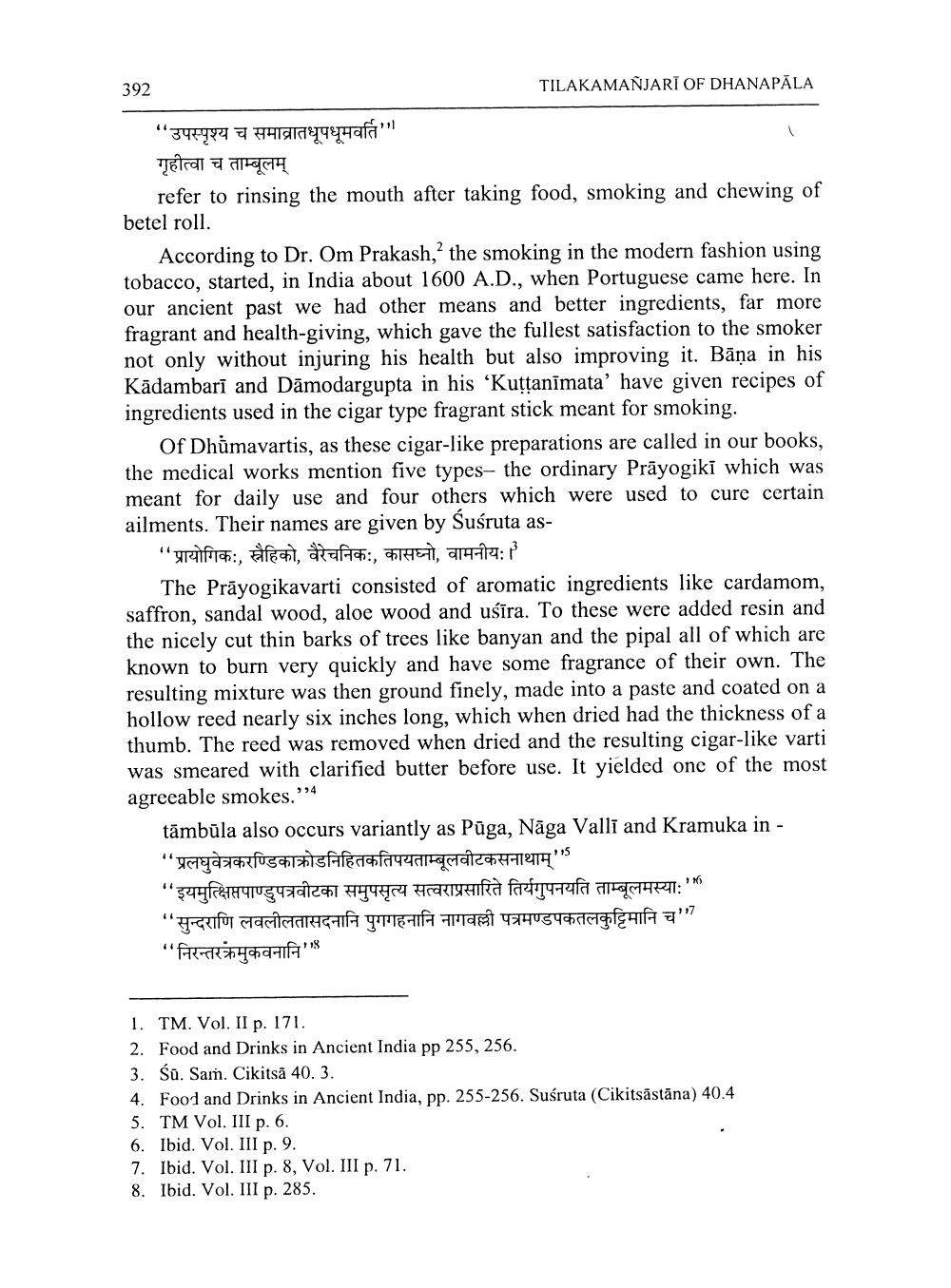________________
392
TILAKAMANJARĪ OF DHANAPALA
"उपस्पृश्य च समाव्रातधूपधूमवर्ति''' गृहीत्वा च ताम्बूलम्
refer to rinsing the mouth after taking food, smoking and chewing of betel roll.
According to Dr. Om Prakash, the smoking in the modern fashion using tobacco, started, in India about 1600 A.D., when Portuguese came here. In our ancient past we had other means and better ingredients, far more fragrant and health-giving, which gave the fullest satisfaction to the smoker not only without injuring his health but also improving it. Bāņa in his Kādambarī and Dāmodargupta in his 'Kuttanīmata' have given recipes of ingredients used in the cigar type fragrant stick meant for smoking.
Of Dhumavartis, as these cigar-like preparations are called in our books, the medical works mention five types, the ordinary Prāyogiki which was meant for daily use and four others which were used to cure certain ailments. Their names are given by Susruta as
" rf1h, fa, , 14811, anir:
The Prāyogikavarti consisted of aromatic ingredients like cardamom, saffron, sandal wood, aloe wood and uśīra. To these were added resin and the nicely cut thin barks of trees like banyan and the pipal all of which are known to burn very quickly and have some fragrance of their own. The resulting mixture was then ground finely, made into a paste and coated on a hollow reed nearly six inches long, which when dried had the thickness of a thumb. The reed was removed when dried and the resulting cigar-like varti was smeared with clarified butter before use. It yielded one of the most agreeable smokes."4
tāmbūla also occurs variantly as Pūga, Nāga Vallī and Kramuka in - "प्रलघुवेत्रकरण्डिकाक्रोडनिहितकतिपयताम्बूलवीटकसनाथाम् । "इयमुत्क्षिप्तपाण्डुपत्रवीटका समुपसृत्य सत्वराप्रसारिते तिर्यगुपनयति ताम्बूलमस्या:' "सुन्दराणि लवलीलतासदनानि पुगगहनानि नागवल्ली पत्रमण्डपकतलकुट्टिमानि च" "FeLhahifas
1. TM. Vol. II p. 171. 2. Food and Drinks in Ancient India pp 255, 256. 3. Śū. Sam. Cikitsa 40. 3. 4. Food and Drinks in Ancient India, pp. 255-256. Susruta (Cikitsāstāna) 40.4 5. TM Vol. III p. 6. 6. Ibid. Vol. III p. 9. 7. Ibid. Vol. III p. 8, Vol. III p. 71. 8. Ibid. Vol. III p. 285.




